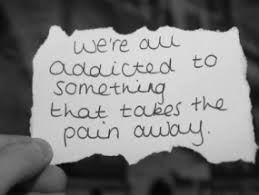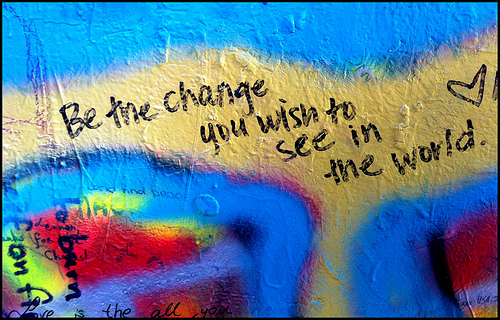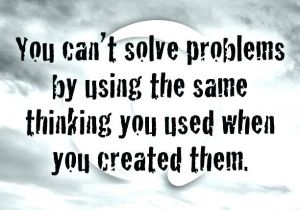Many people don’t like to change. But to protect your kids from addiction, you may have to.
There have long been misconceptions about addiction that needed to be adjusted. In recent years, prescription drug abuse is changing how we think about addiction even more.
 But is the use of pharmaceutical drugs really that big a deal? The facts speak for themselves:
But is the use of pharmaceutical drugs really that big a deal? The facts speak for themselves:
- The National Institute on Drug Abuse says 1 in 9 youth used prescription drugs non-medically within the past year. And the danger is growing rapidly: almost 5 million new people abuse these medicines every year!
- The Casa Palmera organization states that 5 of the top 6 drugs abused by high school seniors are pharmaceuticals. Nearly 30 percent of teens believe there is “nothing wrong” with abusing prescription drugs and that they aren’t addictive.
- To make matters worse, DrugAbuse.com reports that overdoses on prescription drugs are the leading cause of drug deaths in the United States.
Obviously, something has to change. That something may be you!
Changing How We Think About Addiction
In a prior article, we outlined that we need to change how the world thinks about addiction:
Addiction is classified by medical organizations as a disease, and it alters the structure and chemistry of the brain. Fortunately, it is not only treatable, it can even be prevented. Addiction is in a spectrum of compulsive behavior that affects virtually everyone to some degree. But, if people deal with addiction the right way, they can actually develop a lifestyle that is better than before!
I went to an event recently which pointed out that changing how we think about addiction is more important than ever. The “Harmless vs. Hazardous: Promoting Teen Health” conference was sponsored by a group of local organizations: All In Mountain Brook, Safe and Healthy Homewood, Help the Hills Coalition, Addiction Prevention Coalition, Jefferson County Health Department, Addiction and Recovery Alliance, and Samford University Mann Center.
Here are some points the speakers emphasized related to changing how we think about addiction:
Change our understanding of drug abuse
Lauren Sisler (ESPN, SEC Network, AL.com) told a touching personal story of prescription drug abuse in the family. Her experience offers lessons anyone involved with drugs should consider: people who suffer in silence, sometimes for decades; tragedy that is unexpected and shocking, even to those closest to the victims; the lasting pain of dealing with the tragic death of loved ones; what it’s like to live under a cloud of stigma; and how addiction can become the thief of all joy.
Change our appreciation of the danger
Susan Walley, M.D. (UAB, Children’s of Alabama) emphasized that kids don’t take drugs like heroin right away. Instead, they start with something seemingly less sinister, such as vaping. Meanwhile, companies use advertising and packaging to make harmful substances as attractive as possible. Many young people don’t comprehend the danger in these drugs, and the risk is compounded by the fact that teenage brains are more prone to addiction.
Change our view of where drugs come from
Rebekah Savage, M.D. (UAB, Children’s of Alabama) showed statistics on how prescription drugs are not being obtained from the type of drug dealers that many parents envision lurking in the shadows. Instead, the top sources of illegal pharmaceuticals are: friends, home, doctors, and the internet. The proximity of these drug sources should be a frightening wakeup call to parents.
Change our opinion of why many kids take drugs
Dr. Savage also pointed out how prescription drugs are used to address common issues:
- Opiods to deal with pain or because they feel good.
- Stimulants for energy, alertness, or to lose weight.
- Sedatives to handle anxiety or sleep more deeply.
- Antidepressants to counter feelings of sadness.
Parents need to understand that when their kids start taking prescription drugs, they don’t see those meds as a problem; instead, they are a solution!
Change our image of what drug addicts are like
Stephen M. Taylor, M.D. (Pathway Healthcare, NBA Player Assistance Program) adjusted our perceptions about the type of people taking prescription drugs today. No longer is drug abuse happening only in the poorer sections of town. Instead, the ever-growing crisis is creating a great number of drug addicts who are white and middle or upper class economically, and who in all other ways seem perfectly “normal looking.”
Change our approach for dealing with drugs
Dr. Taylor then woke up the audience with a vigorous call to action. Gone are the times when parents could sit back as their kids safely traveled through the teenage years. Instead, to best protect their kids from addictions, parents should, “Jump on it early, be aggressive, and never let your guard down!” And remember that preventing addiction begins by addressing our own issues.
Change the myths we maintain about drugs
Kevin Bridgmon, MS, LPC (Bradford Health Services) closed the conference by listing some of the misconceptions many parents have about the risk of drug abuse in their family:
- My kid is too young.
- My kid passes drug tests.
- My kid does not seem like a drug user.
- I would know it if my kid was using drugs.
To make an impact on addiction, there are many things we can try to change: public policy, government funding, law enforcement, school administration, healthcare, and others.
But, for most parents, those things are outside your control. But not everything is, because you can change! And you can change your family.
If enough people do that, we can change our communities, and change the world.
Question: What struck you as most critical for changing how we think about addiction?
Action: Commit to do all you can as a parent to help protect your kids from addiction.
Photo by Paul Bowman 


